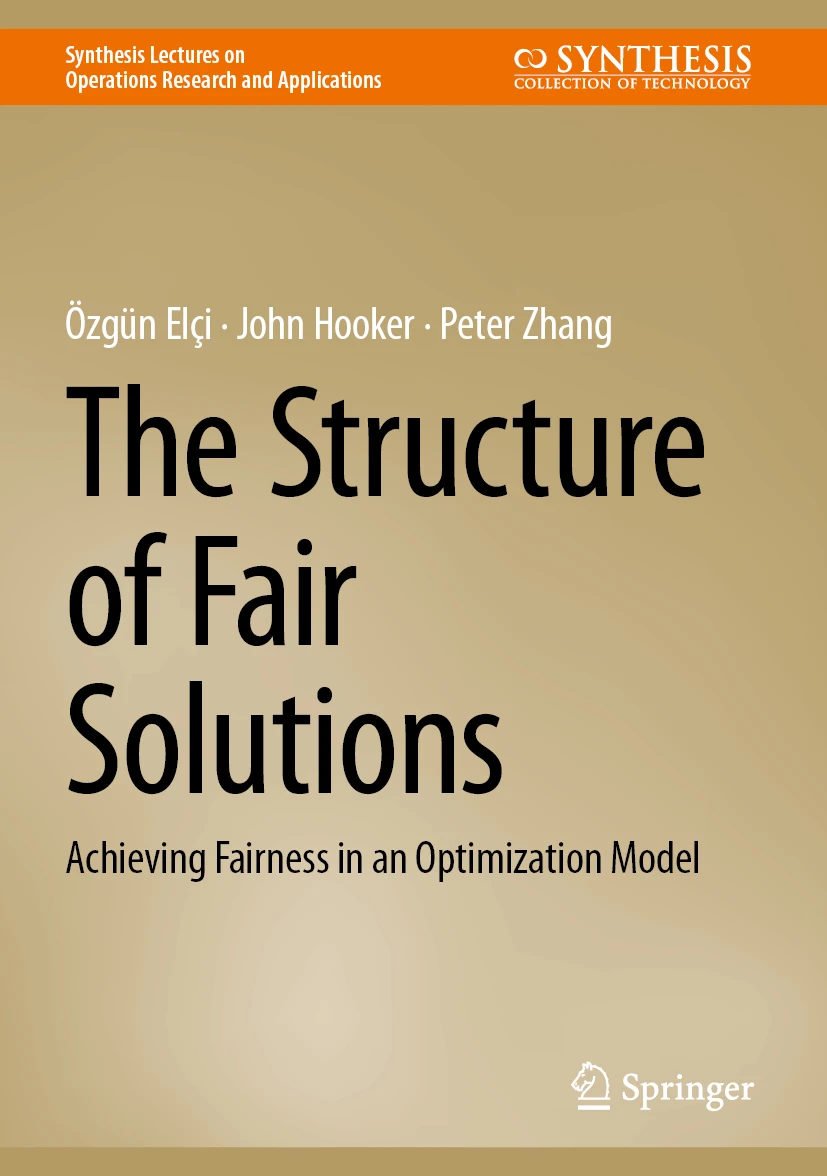
A New Book, The Structure of Fair Solutions, Reshapes Optimization by Putting Fairness First
By John Miller
Media InquiriesA new book, The Structure of Fair Solutions: Achieving Fairness in an Optimization Model, by Özgün Elçi, John Hooker, and Peter Zhang, challenges how people typically think about mathematical decision-making tools. Published by Springer Nature in 2025, the book argues that fairness should be a core principle in these models, not an afterthought.
Optimization models usually aim to maximize benefits or minimize costs, but this can unintentionally harm vulnerable groups. For example, a model designed to maximize life-years saved in organ transplants might overlook patients with rare conditions. Similarly, a traffic system focused on maximizing throughput could cause endless delays for some drivers. These are not flaws in the models themselves; they simply prioritize efficiency over fair outcomes.
The authors address the tension between efficiency and fairness directly. While designers often try to maximize things like profit or social welfare, truly incorporating fairness means moving beyond just efficiency-driven results. The book suggests that a solution balancing reasonable efficiency with clear fairness is always better than one that achieves peak efficiency but causes significant unfairness. Essentially, a truly optimal result is one that is fair.
Instead of suggesting that fairness be added to existing models, the book introduces a new way to evaluate fairness by looking at the actual structure of the solutions different models create. This means judging a model by its real-world effects, not just its theoretical assumptions. The authors examine various fairness models, including utilitarian, maximin, and bargaining-based approaches, and discuss how their solutions affect the incentives of different stakeholders and potential transfers. This approach helps readers make more informed and ethical choices, ensuring that the best solutions in our algorithm-driven world consider both efficiency and fairness.
The Structure of Fair Solutions: Achieving Fairness in an Optimization Model is available from Springer Nature as part of their Synthesis Collection of Technology.
